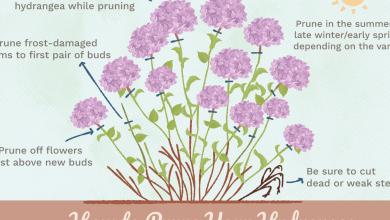How to plant jicama


Pachyrhizus erosus
Jicama is a type of bean that originated in Mexico and Central America, and produces tuberous roots that can be eaten raw or cooked. Rich in inulin, a polysaccharide of fructose sugar, its roots have a sweet taste and are a rich source of dietary fiber. Older or larger roots can be processed to obtain polysaccharides.
Jicama is a short-lived perennial vine that can reach 4 or 5 meters in height, but its branches, leaves, flowers, pods and beans should not be consumed, as they contain retenone, a substance that is moderately toxic to mammals and highly toxic for fish and invertebrates. Pods harvested very young, before beans begin to grow, can also be eaten cooked, but their use is less common.
The popular name jicama comes from the Spanish jícama, which in turn derives from the word nautical xicamatl, which is the name of this plant in the Aztec language. This species may also be known by several other popular names, such as Mexican potatoes, French beans and jacatupé, although other species of beans that produce tuberous roots may also be known by the latter two names.

Climate
It grows best in hot weather, not withstanding low temperatures. It can be grown in milder climates if there are at least 5 months to grow without low temperatures, or protected in greenhouses, but the roots produced will usually be smaller than those grown in warmer places. Warm weather and short days favor the growth of tuberous roots.
Brightness
It needs direct sunlight.
Ground
Ideally, the soil should be light, deep, well drained, fertile and rich in organic matter.
Irrigation
Irrigate frequently so that the soil is always kept moist, but without being soaked.
Planting
Jicama is normally propagated by seeds, but tuberous roots can also be used for this purpose. The seeds can be sown directly at the final location, at a depth of approximately 1.5 cm. They can also be sown in seedbeds or in plastic bags for seedlings, making the transplant when the seedlings are well developed.
Tuberous roots can be used in planting when they are available but there are no seeds, or when trying to select the best roots from the best plants to be used in plantations for the production of seeds that will be used in future plantings.
The spacing can be from 60 to 120 cm between the planting lines, being smaller in a milder climate where the harvest will be carried out as soon as possible and larger in a warmer climate, also depending on the space required in each case for carrying out the treatments and the use or not of staking for plants. The spacing between the plants can be 20 to 25 cm.
Cultivation
Although it is optional, the ideal is that there are fences or trusses with 1 to 3 meters high (or more) to guide the growth of plants.
Removing the flowers can favor the growth of the roots.
Remove weeds that are competing for resources and nutrients.

Harvest
Harvesting can usually be done 5 to 9 months after planting, when the roots are at least 8 cm in diameter. In milder weather, harvesting must be done before the temperature starts to drop too much (harvest if the plants appear to be weakened due to lower temperatures). In hot climates, harvesting is done later, when the roots are larger. Tuberous roots continue to grow, reaching up to 20 kg in some years, but older roots, more than a year old, are less sweet and more starchy than younger ones.
The roots must be carefully dug up so that they are not cut or broken, which hastens their deterioration. The intact roots can be stored for a few weeks at room temperature and for a few months if kept refrigerated.




![Photo of Subpolar Climate: [Characteristics, Flora, Fauna and Adaptability]](https://www.complete-gardening.com/wp-content/uploads/2022/08/subpolar-climate-characteristics-flora-fauna-and-adaptability-390x220.png)